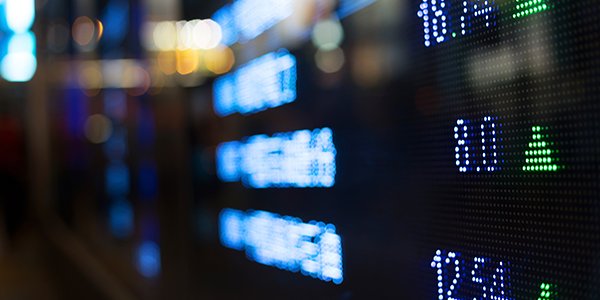For an investor, selecting the right ETF could be a daunting task given the multitude of products available on Canadian exchanges. Before making in-depth investment analysis, wise investors should narrow down their options by eliminating securities that do not meet certain self-imposed standards regarding features such as liquidity, cost and performance.
Before making in-depth investment analysis, wise investors should narrow down their options by eliminating securities that do not meet certain self-imposed standards regarding features such as liquidity, cost and performance.
Here are ten things an ETF investor should look at before making an investment decision:
- Asset class exposure
When choosing an asset class, investors should chiefly consider the amount of risk they are willing to take and the potential rewards. Commodities (or at least many of them) and equities, for instance, are volatile. Fixed income securities, meanwhile, are much less volatile on average, and are suitable for investors wanting a predictable return. Understanding the current business cycle stage can help an investor decide on the allocation between these major asset classes.
Currencies are generally the least volatile assets, and they are appropriate for very conservative investors or as part of a balanced portfolios. It should be noted that when investing in a foreign unhedged ETF, an investor exposes himself to currency risk in addition to the ETF’s asset class risk.
- Performance
Performance should be judged on a risk-adjusted basis, meaning what’s the return per unit of risk. Sharpe and Treynor ratios are widely used to judge risk-adjusted returns. The former, uses standard deviation as its unit of risk and the latter employs beta, which measures volatility against the broad market. The best ETFs are those that have the highest Sharpe and Treynor ratios and provide the highest returns combined with the lowest amount of risk.
- Liquidity
Perhaps, there is nothing more frustrating than wanting to enter or exit an investment and not being able to do so due to lack of liquidity. The ability to cash out is among the most important things when investing. To avoid falling into a liquidity trap, investors should particularly look at average trading volumes and total assets. The higher both of these numbers are, the better.
The discount or premium to net asset value at which an ETF trades also gives an indication about liquidity. When an ETF trades at a discount, it usually means demand is weak and liquidity is low.
- Expense ratio
The expense ratio is a straightforward indicator. A frugal investor should consider the cost of acquiring an ETF before making an investment. Investment costs make a huge difference in the long-run. Typically, ETFs tracking broad market indexes have lower costs than other less liquid products. An average ETF costs 0.44% per year, and an investor could use that benchmark to judge whether a fund is expensive or not.
- Active vs. Passive
Most ETFs are passive, which means they track an index. But recently some providers, such as DoubleLine and Pimco, have been experimenting with active ETFs. These products represent a very small share of the ETF market, but they exist to try and deliver alpha.
An investor willing to venture into the active ETF space should place particular emphasis on the portfolio manager’s track record. Furthermore, it should be noted that active ETFs tend to have higher expense ratios.
- Tracking error
Tracking error is an indicator which shows how much an ETF’s performance deviates from its underlying index. In reality, almost all ETFs fail to perfectly mimic the performance of their underlying securities, and thus the investor’s mission is to find ETFs with the lowest tracking error.
- Dividend
Investors should look at the annual dividend paid, it’s consistency over time, and the growth rate. However, an excessive dividend in conjunction with poor price appreciation and future growth prospects of an ETF is not a good investment, as losses from capital depreciation could well exceed the dividends.
Investors looking for stable dividends and low volatility should chiefly consider ETFs containing bluechip, mature companies.
- Concentration
A concentrated ETF is one that has relatively few holdings. It’s important to note the percentage of assets in the top ten holdings. Generally, the higher the percentage, the less diversified an ETF is, and the more risk it carries, when compared to one with fair dispersion. However, a concentrated portfolio may provide better risk-adjusted returns if the top ten holdings are good assets. An assessment of the top ten holdings’ quality and their combined percentage value of total assets are important considerations before investing.
- Tax treatment
ETF investors are taxed differently depending on the type of their account, the asset class and the asset’s country of origin. A Registered Retirement Savings Plan (RRSP) will largely allow the investor to defer all taxes until withdrawal, at which point the gain will be taxed as regular income. There is a caveat, however. U.S. and international equity is subject to a 15% and up to 33% withholding tax, respectively, if stocks are held via a Toronto-listed ETF.
With a Tax-Free Savings Account (TFSAs) investors incur no tax on Canadian equity ETFs, but the dividends from U.S. and international equity are subject to a withholding tax similar to the RRSP. Capital gains are tax-free.
Under taxable accounts, dividends on Canadian equity are qualified for a tax credit. U.S. and international equity dividends are fully taxed, while the withholding tax on dividends may be recoverable. In addition, interest on fixed income ETFs is fully taxable. Capital gains on all asset types are taxed at half the marginal rate and can be deferred.
- Inverse/Leveraged
This category of ETFs is largely for short term traders or hedging purposes. 2x and 3x leveraged ETFs are significantly riskier than regular ETFs and rebalance daily. Generally, investors shouldn’t hold these in the long run because they can quickly deteriorate in value because of leverage decay. This is especially true for more volatile asset classes.
Inverse ETFs are used to bet against a specific asset. They are largely used for short periods when market corrections are anticipated and could also act as a hedge.










